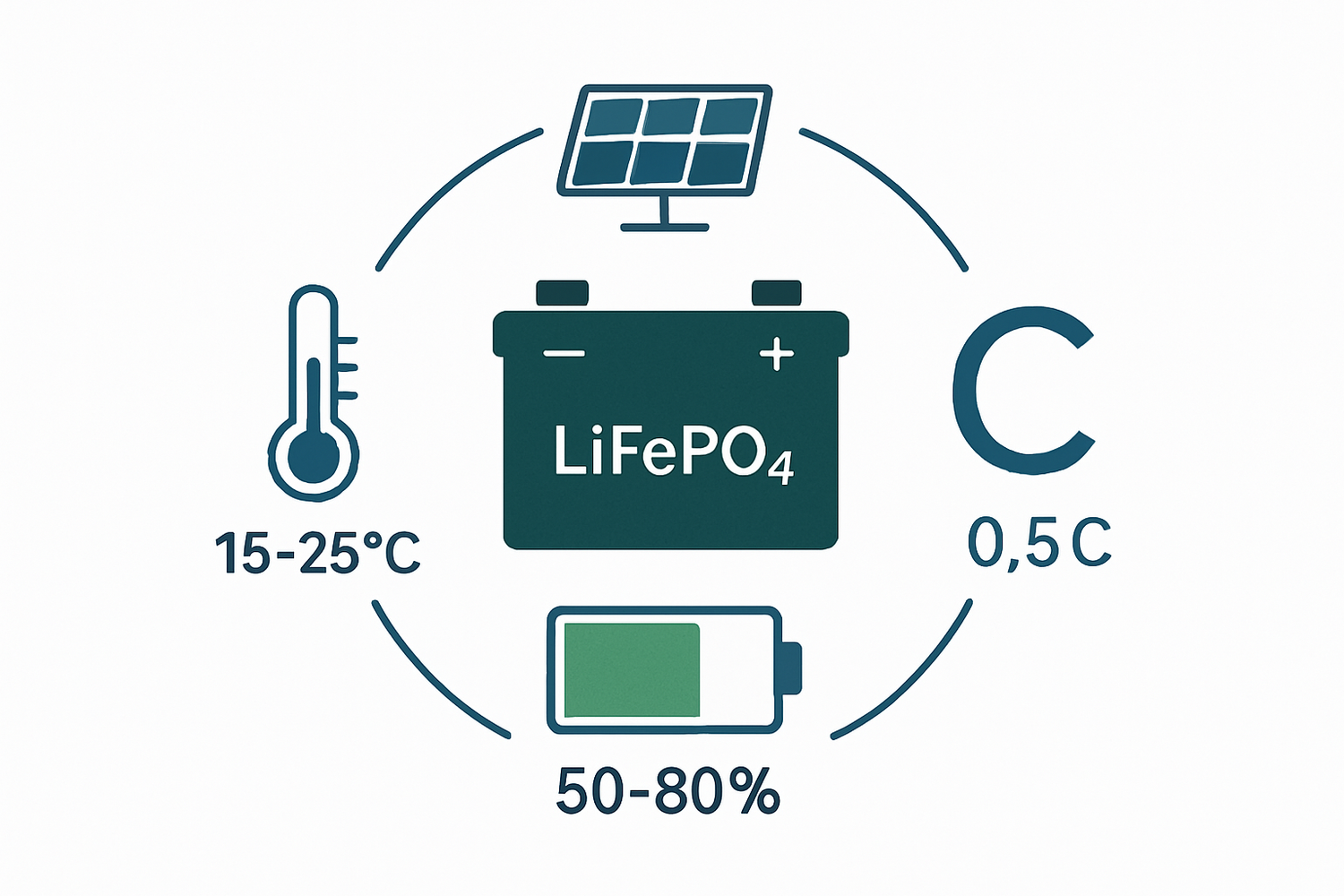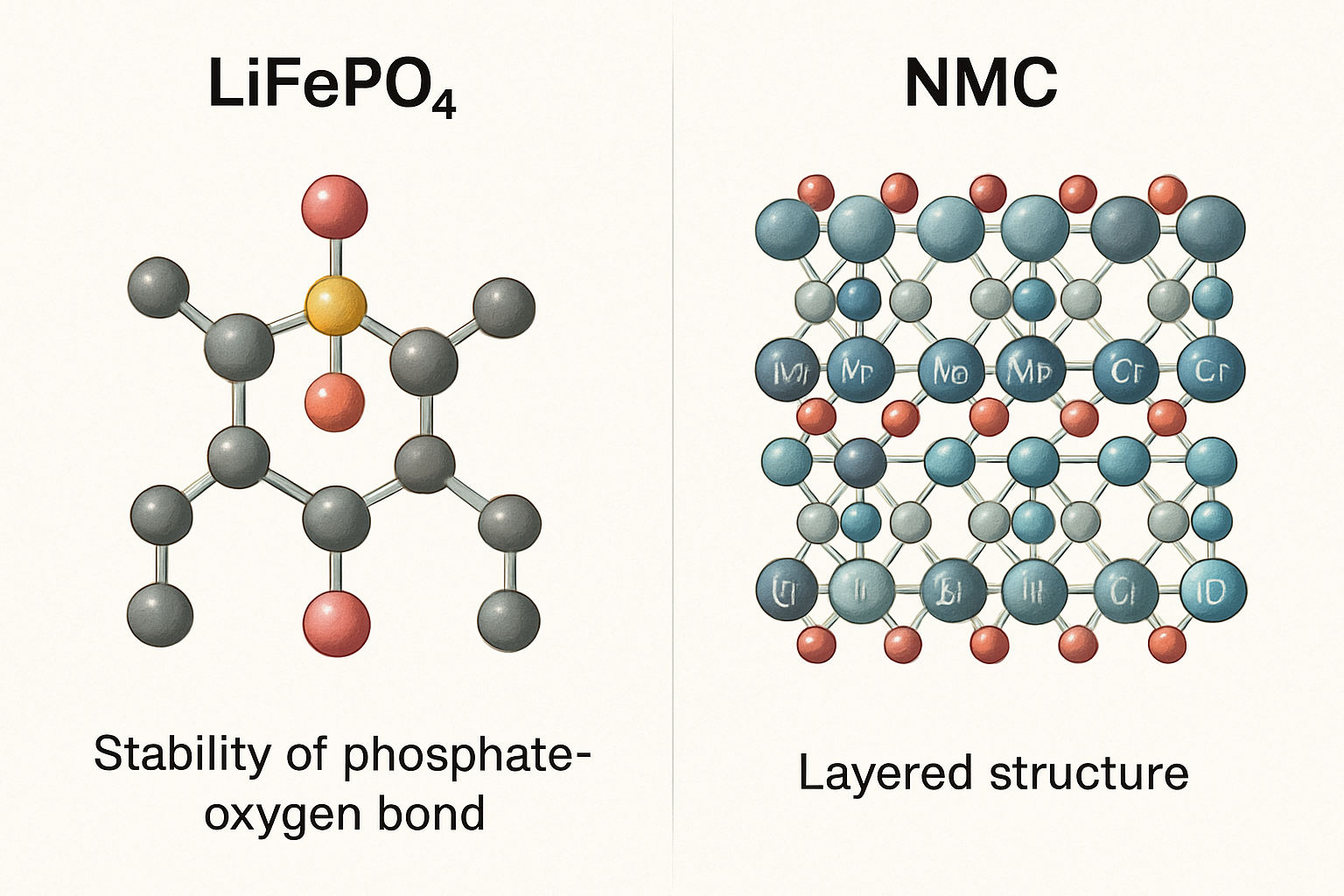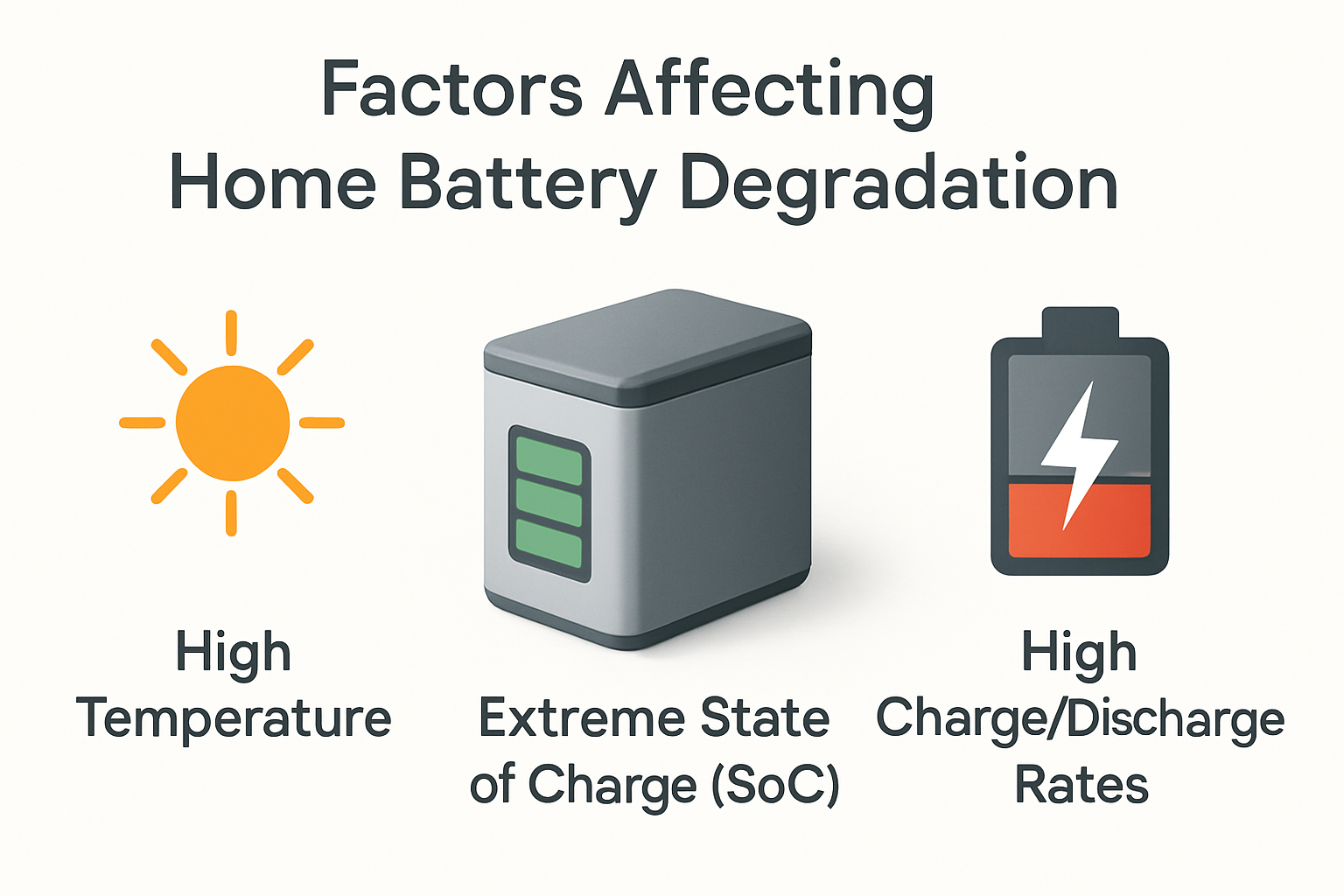A Lithium Iron Phosphate (LiFePO4) battery is the heart of a modern solar energy storage system, offering high performance and safety. To get the most from your energy independence, understanding how to care for this vital component is key. The longevity of your LiFePO4 solar battery goes beyond its rated cycle count; it depends on how it's used day-to-day. By managing a few key operational factors, you can significantly extend its service life and maximize your return on investment.
Understanding Core Factors in LiFePO4 Battery Degradation
Every battery experiences degradation over time, but the rate at which it happens is not fixed. Several variables influence the health and lifespan of your LiFePO4 solar battery. Managing these factors is the first step toward battery lifespan maximization.
The Impact of Temperature
Temperature is a critical factor affecting battery chemistry and performance. LiFePO4 batteries operate best within a specific temperature range, typically between 15°C and 25°C (59°F and 77°F). Extreme heat accelerates chemical reactions inside the battery, leading to faster capacity loss. Conversely, extreme cold can reduce the battery's efficiency and capacity temporarily. Installing your battery in a climate-controlled or well-ventilated space, away from direct sunlight, is a simple yet effective measure to prevent battery degradation.
Depth of Discharge (DoD) and State of Charge (SoC)
Depth of Discharge refers to the percentage of the battery's capacity that has been used. A lower DoD means a longer cycle life. For example, a battery consistently discharged to 80% will last for thousands more cycles than one regularly drained to 20%. While LiFePO4 batteries can handle deep discharges, practicing shallower cycles can substantially extend their lifespan. The International Energy Agency's Energy Technology Perspectives 2024 report highlights that battery performance and cycle life are key to the economic viability of energy storage systems. Aiming for an average DoD of 50-80% is a practical approach for daily use.
| Depth of Discharge (DoD) | Estimated Cycle Life |
|---|---|
| 100% | ~2,500 - 3,000 cycles |
| 80% | ~4,000 - 5,000 cycles |
| 50% | ~6,000 - 8,000 cycles |
| 20% | ~10,000+ cycles |
Note: These are illustrative values. Actual cycle life can vary based on battery quality and operating conditions.
Charge and Discharge Rates (C-Rates)
The C-rate measures how quickly a battery is charged or discharged relative to its capacity. A 1C rate on a 100Ah battery means a 100-amp current. High C-rates generate excess heat and put stress on the battery's internal components, accelerating degradation. For optimal health, it's best to operate your LiFePO4 battery at a C-rate below 0.5C. This means properly sizing your battery bank to handle your home's peak loads without excessive strain. An undersized system will be forced to work harder, leading to a shorter lifespan.
Practical Strategies for LiFePO4 Solar Battery Lifespan Extension
Knowing the causes of degradation is one part of the solution. Implementing practical strategies is the other. These proactive steps can help you achieve significant LiFePO4 solar battery lifespan extension.
Implement Smart Charging Protocols
Your Battery Management System (BMS) and solar charge controller are powerful tools. Use them to set optimal charging parameters. Avoid consistently charging to 100% capacity. Instead, setting the maximum charge voltage to a level that corresponds to about 90-95% SoC can reduce stress on the cells. This practice of partial charging is a well-known method for extending the life of lithium-ion chemistries. According to the U.S. Department of Energy's research on power optimization, managing power flow effectively not only increases output but also enhances system longevity.
Create an Optimal Operating Environment
Physical placement matters. Ensure your battery system is installed in a location that is dry, clean, and protected from temperature extremes. For outdoor installations, a weather-resistant and insulated enclosure is recommended. Proper ventilation is also crucial to dissipate any heat generated during operation. A stable environment minimizes the daily stresses that contribute to long-term battery degradation.
Ensure Proper System Sizing and Load Management
A correctly sized solar energy storage system is fundamental to its longevity. An undersized battery bank will be subjected to high discharge rates and deep cycles, both of which shorten its life. Work with a professional to calculate your energy needs accurately. For an in-depth look at system components and their performance, this ultimate reference on solar storage performance provides valuable data and insights. Managing your loads by staggering the use of high-power appliances also helps to avoid sharp spikes in power demand, further protecting the battery.
The Critical Role of the Battery Management System (BMS)
The BMS is the unsung hero of your energy storage system. It is an electronic system that manages the battery pack and acts as its brain, ensuring safety, performance, and longevity.
Core Protective Functions
A quality BMS provides essential protections that prevent the most common forms of battery abuse. These include over-charge protection, over-discharge protection, over-current safeguarding, and temperature monitoring. It automatically disconnects the battery if it detects any unsafe conditions, shielding it from events that could cause permanent damage. As noted in IRENA's Renewable Power Generation Costs in 2024 report, mitigating degradation rates is a key factor in the overall cost-effectiveness of energy storage.
Cell Balancing for Uniform Aging
A LiFePO4 battery pack consists of many individual cells connected together. Over time, slight differences can cause some cells to have a slightly higher or lower voltage than others. This is known as cell imbalance. The BMS actively or passively balances the charge across all cells, ensuring they work together harmoniously. This function is vital because it prevents individual cells from being over-stressed, which would otherwise lead to the premature failure of the entire pack.
A Long-Term View on Your Energy Investment
Your LiFePO4 solar battery is more than just a piece of equipment; it's a long-term investment in your energy future. By actively managing temperature, adopting smart charging habits, and ensuring your system is correctly sized, you take control of its health and longevity. These practices not only protect your hardware but also enhance the reliability and value of your entire solar power system, securing your energy independence for years to come.
Disclaimer: The information provided is for educational purposes only and does not constitute professional financial or installation advice. Always consult with a qualified professional for system design and installation.
Frequently Asked Questions
How long should a LiFePO4 solar battery last?
A quality LiFePO4 battery can last between 3,000 to 6,000 charge cycles, which often translates to 10 to 20 years of service. However, this lifespan is heavily dependent on operating conditions such as temperature, depth of discharge, and charge rates. Following the best practices outlined here will help you reach the upper end of that range.
Is it harmful to leave a LiFePO4 battery fully charged?
While LiFePO4 chemistry is more stable than other lithium-ion types, keeping it at a 100% state of charge for extended periods can accelerate calendar aging. For daily use, it is better to cycle it. If you plan to store the battery for a long time, maintaining a state of charge between 40% and 60% is ideal.
Can a 'dead' LiFePO4 battery be revived?
If a LiFePO4 battery is 'dead' because the BMS has entered a low-voltage protection mode, it can often be 'woken up' using a specialized charger that has a 0V activation feature. However, if the cells themselves are internally damaged or have been left in a deeply discharged state for too long, reviving them may not be possible or safe.
What is the ideal Depth of Discharge (DoD) for a LiFePO4 battery?
There is a direct trade-off between DoD and cycle life. For maximum longevity, a shallower DoD is always better. A common practice for daily cycling is to use an 80% DoD, which provides a good balance between usable capacity and lifespan. If maximizing cycle life is the primary goal, limiting DoD to 50% can nearly double the number of available cycles.





Leave a comment
All comments are moderated before being published.
This site is protected by hCaptcha and the hCaptcha Privacy Policy and Terms of Service apply.